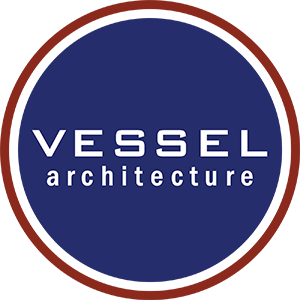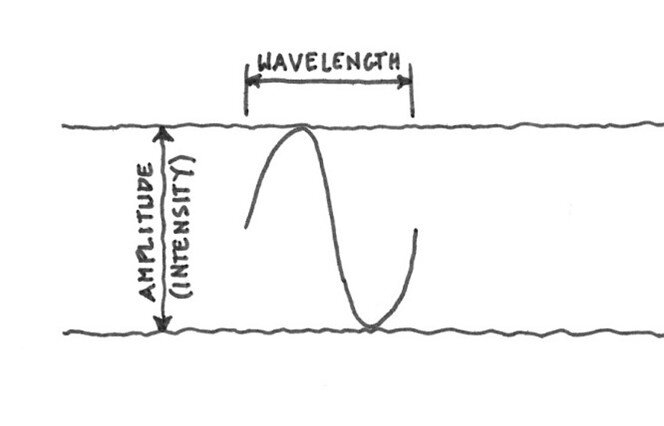3 UV Light Strategies for Infection Control
This is our third in a series of articles discussing the impact of Covid-19 on Senior Living design. In this article we examine three (3) strategies for the use of Ultraviolet light in preventing the spread of disease. Ultraviolet Germicidal Irradiation (UVGI), also known as Germicidal UV (GUV) is an old and well-known method of disinfection that has been in use since 1877 [1]. It has been in frequent use in healthcare settings, but also has applications transferable to other facility types.
For those just joining us, SARS-CoV-2 (AKA the Novel Coronavirus that causes Covid-19) and many other pathogens are transmitted when an infected person aspirates aerosolized particles into the air where they can remain for at least 3 hours [7]. Since others must breathe that air, this presents a challenge. Isolation is the best way to prevent infection, but that is not always feasible. Where we can’t prevent the introduction of pathogens into an environment, we can isolate and eliminate many of them through HVAC system design (see previous article) and reduce their viability through disinfection. UV light can be an effective and largely passive means to the latter end.
Three Concepts to Consider:
UV light includes a range of wavelengths.
UV light ranges from highly effective, to not effective at all, depending on the wavelength and intensity.
UV light can be harmful to people, and the affects depend upon the wavelengths, intensities, and duration.
UV Light includes a Range of Wavelengths
UV light has several subcategories based upon wavelength. We wear sunscreen to counter the effects of UV-A and UV-B, because those bands cause sunburn. The next longest wavelength is UV-C, and this is where, as they say *“the magic happens” [4].
* Nobody actually says that.
Different Wavelengths are More or Less Effective
UV light works as a disinfectant by damaging the DNA or RNA of viruses, which renders them unable to replicate, effectively “killing” them, (or “deactivating” them, since viruses are non-living).[4]. The most effective antimicrobial wavelengths range from 265-270nm (in the UV-C range), with effectiveness tapering off in either direction. Fixtures are most commonly produced emitting 254nm radiant energy, which is found to be about 80-85% effective versus peak wavelengths. Humidity can have a negative effect on the efficiency of GUV, however as noted in the previous article, humidity itself in the absence of GUV can have a positive influence in reducing risk. The CDC recommends limiting relative humidity in rooms receiving upper air treatment to 30-60%, which is in keeping with our previous observations in favor of 40-50% [1,6,9].
Some Bands of UV Light are harmful to People
It is commonly known that UV-A and UV-B can cause harm to humans, but does UV-C also cause harm? Unfortunately, yes. The good news is that according to Cooper Lighting Solutions, at 254nm, the safe daily exposure of 8 hours (at 6mJ/cm2) is equivalent to about 10 minutes in the sun [6]. Most UV-C is absorbed by the outer layers of skin, and therefore does not reach the living and growing layers. Risk of permanent damage to skin is considered generally low unless doses are high and/or prolonged or occur on a wound. Known risks to the eyes include Photokeratitis and conjunctivitis. [10]
Here are three strategies that can be used to improve Indoor Air Quality (IAQ) by reducing the number of pathogens, generally listed in order of preference.
1. Upper room UVGI appears to be the most effective method for treating spaces that are continuously occupied (such as most spaces in Senior Living). This involves installing UVGI lamps near the ceiling that are open to airflow and facing up or out but shielded or concealed from occupants. This allows large volumes of air to be continuously treated as it circulates within a space. Generally, these are only recommended in areas where ceilings are high enough to keep the treated area 7 feet and up. Natural air currents within a space will generally provide the minimum amount of circulation needed, but assistance from the HVAC system or a fan can improve performance. The main benefit of this approach is that it gets the germicidal effect as close as possible to the potential source and provides ongoing treatment in the area needed. The effects of a system like this have been compared to the effects of dilution using a mechanical system, which is measured in Air Changes per Hour (ACH). Effective dilution requires that air in a space be changed 6-12 times per hour, and evidence suggests that this provides an equivalent of approximately 24 ACH [1]. A potential drawback to this method is that continued exposure to UV-C has the potential to degrade paint, yellow plastics, and dull the surfaces of shiny objects over time [6].
2. Airstream UVGI systems are installed in duct work and near heat exchange coils. They expose air moving through the system and the surfaces of internal system components to UV-C spectrum light. Good, right? Yes, in practice this offers real, but limited benefits. Systems like this have been found to provide the equivalent of about 1-2 ACH [1]. The main limiting factor is that the air is not treated at all until it leaves the space. Some advantages are that again, air is receiving ongoing treatment without ongoing human intervention, and it allows a reduction in the amount of fresh air required, which would have to be tempered, and thereby consume energy. Preventing buildup of microbes on coils can also lead to more efficient operation of the system, saving additional energy [5].
3. Portable UVGI systems can be wheeled in and set to run when rooms are unoccupied. Many hospitals use portable UVGI in patient rooms to purify the air and disinfect exposed surfaces. Senior Living facilities may benefit from keeping one such unit on site to treat specific rooms during off-hours. An advantage of this kind of system is that it has the potential to disinfect surfaces, and not only the air within a space. Some limitations of this this approach are that it is neither passive nor “real time”, and the rooms must remain unoccupied while systems are in use. Also, UV light is only effective through “line of site”, meaning that nothing in shadow reliably receives treatment- although there is evidence that reflected UV-C light can also be effective when exposure is adequately intense and long [3]. Another consideration is that surfaces must still be manually cleaned, since the light cannot disinfect soiled surfaces. For those willing to spend the extra money, there are robots on the market with sensors to deal with areas of shadow.
A Few Final Thoughts
Exposure to the proper amount of irradiation is critical, so both the power, distance and time of exposure are important factors.
UV-C lamps are highly technical in their design and specifications. Many cheap lamps have flooded the market listing inaccurate specifications and misleading claims in marketing materials. These lamps may have wavelengths of UV light that generate ozone, suffer from limited power output, and have little effect on viruses. Therefore, systems should be designed by qualified engineers in close consultation with reputable equipment manufacturers.
This technology can be safe, effective, and chemical free when used properly, but care must be taken in installation, maintenance and use to avoid direct exposure to humans.
No system can completely eliminate the potential for person to person transmission of pathogens, but systems like these can be employed to significantly reduce the risk.
References
IES Committee Report: Germicidal Ultraviolet (GUV) – Frequently Asked Questions IES CR-2-20-V1
Berkeley Lab https://iaqscience.lbl.gov/air-uv
Comparing and optimizing ultraviolet germicidal irradiation systems use for patient room terminal disinfection: an exploratory study using radiometry and commercial test cards https://aricjournal.biomedcentral.com/articles/10.1186/s13756-018-0317-1
How UVC works https://tru-d.com/howuvcworks/
https://www.uvdi.com/hvac/coil-maintenance/
http://www.cooperindustries.com/content/public/en/lighting/resources/LightingStories/guv/faqs.html
ASHRAE-COVID-19-guidance-20-03-25
https://www.epa.gov/radtown/ultraviolet-uv-radiation-and-sun-exposure
Environmental Control for Tuberculosis: Basic Upper-Room Ultraviolet Germicidal Irradiation Guidelines for Healthcare Settings https://www.cdc.gov/niosh/docs/2009-105/pdfs/2009-105.pdf?id=10.26616/NIOSHPUB2009105
Is UVC Safe? https://www.klaran.com/is-uvc-safe
Mick Schaefer, AIA | NCARB | LEED GA
Mick has been with Vessel since 2012, working on a variety of projects large and small. He focus is always on the client and helping them navigate the many (and sometimes complex) stages of their project.
Brian Van Winkle, AIA | NCARB
As a founding partner I am privileged to lead Vessel in our mission to “Create places where people flourish”. Successful buildings start with vision, are brought to life by people, and find their highest purpose when people flourish in them. Successful projects come from flourishing teams and we are relentlessly committed to displaying servant leadership to each other, our clients, consultants, and contractors.








